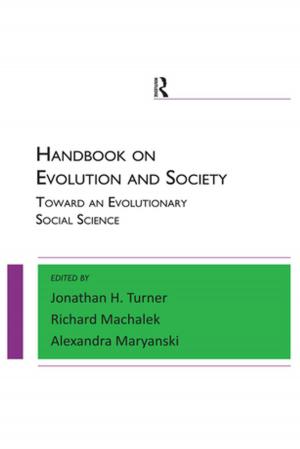Creation, Use, and Deployment of Digital Information
Nonfiction, Reference & Language, Education & Teaching, Teaching, Computers & Technology, Language Arts, Communication| Author: | ISBN: | 9781135618186 | |
| Publisher: | Taylor and Francis | Publication: | May 6, 2005 |
| Imprint: | Routledge | Language: | English |
| Author: | |
| ISBN: | 9781135618186 |
| Publisher: | Taylor and Francis |
| Publication: | May 6, 2005 |
| Imprint: | Routledge |
| Language: | English |
The aim of this book is to present results of scientific research on how digital information should be designed and how artifacts or systems containing digital content should maximize usability, and to explain how context can influence the nature and effectiveness of digital communication. Using a philosophical, cognitive, and technical standpoint, the book covers the issue of what digital information actually is. The text also presents research outcomes from the perspective of research in information science--broadly construed--a term now used to cover a range of theoretical and practical approaches.
Creation, Use, and Deployment of Digital Information is broken down into three parts:
*Part I presents information on how electronic documents can be realized--the complexities, alternatives, functions, and restrictions are treated here.
*Part II discusses how human beings process information and how technical solutions can satisfy human restrictions.
*Part III treats the context in which digital information processing and deployment takes place.
The book has much to offer to academics in many disciplines, including science, the arts, psychology, education, and the information and computing sciences.
The aim of this book is to present results of scientific research on how digital information should be designed and how artifacts or systems containing digital content should maximize usability, and to explain how context can influence the nature and effectiveness of digital communication. Using a philosophical, cognitive, and technical standpoint, the book covers the issue of what digital information actually is. The text also presents research outcomes from the perspective of research in information science--broadly construed--a term now used to cover a range of theoretical and practical approaches.
Creation, Use, and Deployment of Digital Information is broken down into three parts:
*Part I presents information on how electronic documents can be realized--the complexities, alternatives, functions, and restrictions are treated here.
*Part II discusses how human beings process information and how technical solutions can satisfy human restrictions.
*Part III treats the context in which digital information processing and deployment takes place.
The book has much to offer to academics in many disciplines, including science, the arts, psychology, education, and the information and computing sciences.















